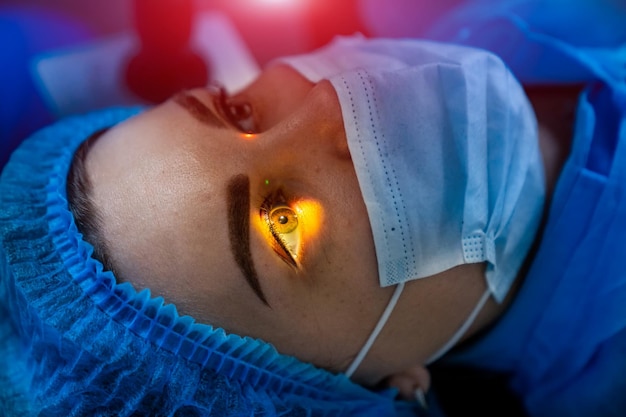Advancements in medical technology have revolutionized the field of ophthalmology, particularly in the treatment of cataracts. Cataracts, a clouding of the eye’s natural lens, can lead to impaired vision and reduced quality of life. Traditionally, cataract surgery involved manual techniques, but the introduction of laser-assisted cataract surgery has raised questions about the differences between these two approaches. In this article, we will delve into the distinctions between traditional and laser cataract surgery, shedding light on the benefits and considerations associated with each technique.

Understanding Cataract Surgery
An artificial intraocular lens (IOL) replaces the cloudy lens during cataract surgery to restore clear vision. Both traditional and laser cataract surgery follow this fundamental process, but they differ in how certain steps are executed.
Traditional Cataract Surgery
Traditional cataract surgery, also known as phacoemulsification, has been the standard procedure for decades. It involves a surgeon making a small incision in the eye’s cornea and using handheld surgical instruments to manually break up the cloudy lens. Once the lens is fragmented, an ultrasonic device emulsifies the lens pieces, allowing them to be suctioned out of the eye. After the removal of the natural lens, an IOL is implanted to restore vision.
Pros and Cons of Traditional Cataract Surgery
One advantage of traditional cataract surgery is its long-standing track record of success. Experienced surgeons are well-practiced in this technique, making it a reliable option. Additionally, traditional surgery tends to be more cost-effective, making it accessible to a wider range of patients.
However, traditional cataract surgery is not without limitations. The manual nature of the procedure can introduce variability, as the accuracy of certain steps depends on the surgeon’s skill. Additionally, the size of the incision needed can be larger, potentially leading to longer recovery times and increased risk of complications.
Laser-Assisted Cataract Surgery
Laser-assisted cataract surgery, also known as femtosecond laser cataract surgery, is a newer approach that incorporates laser technology to perform certain steps of the procedure. The process begins with the creation of a detailed 3D image of the eye using advanced imaging technology. This image guides the laser in creating precise incisions and softening the cloudy lens.
Pros and Cons of Laser-Assisted Cataract Surgery
Laser cataract surgery offers several benefits, primarily related to its precision. The use of lasers allows for consistent and accurate incisions, potentially reducing the risk of complications. The laser can also soften the cataract, making it easier to break up and remove, which may lead to quicker recovery times.
However, the cost of laser cataract surgery is typically higher due to the advanced technology involved. Additionally, there is a learning curve associated with using the laser, and not all surgeons are equally experienced with this technique. Some critics argue that while laser-assisted surgery offers precision, it may not necessarily result in significantly better outcomes compared to skilled traditional surgery.
Considerations and Patient Factors
When deciding between traditional and laser cataract surgery, several factors should be taken into account, including the patient’s overall health, the severity of the cataract, and their personal preferences. Both techniques can yield positive results, and the choice ultimately depends on the patient’s circumstances.
Conclusion
Cataract surgery has come a long way, offering patients a chance to regain clear vision and improved quality of life. Traditional cataract surgery, with its time-tested methods, has successfully treated countless individuals. On the other hand, laser-assisted cataract surgery introduces cutting-edge technology that can enhance precision and potentially expedite recovery.
As medical technology continues to evolve, patients and surgeons need to stay informed about the available options. Consulting with an experienced ophthalmologist, such as Dr. Aarti Pandya, can provide valuable insights into which technique is best suited to a patient’s unique needs. Whether one chooses traditional or laser cataract surgery, the ultimate goal remains the same: to achieve optimal visual outcomes and enhance the overall quality of life.




